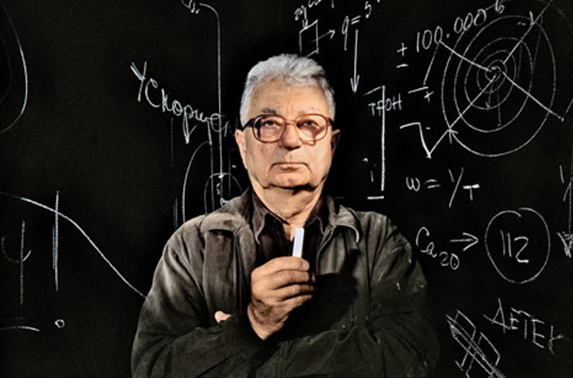On November 28, 2016, the International Union of Pure and Applied Chemistry (IUPAC) approved the name and symbols for four elements: nihonium (Nh), moscovium (Mc), tennessine (Ts), and oganesson (Og), respectively for element 113, 115, 117, and 118.
Following a 5-month period of public review, the names earlier proposed by the discoverers have been approved by the IUPAC Bureau. The following names and symbols are officially assigned:
Nihonium and symbol Nh, for the element 113,
Moscovium and symbol Mc, for the element 115,
Tennessine and symbol Ts, for the element 117, and
Oganesson and symbol Og, for the element 118.
In concordance with and following the earlier reports that the claims for discovery of these elements have been fulfilled [1,2], the discoverers have been invited to propose names. Keeping with tradition, the newly discovered elements have been named after a place or geographical region, or a scientist. The ending of the names also reflects and maintains historical and chemical consistency: “-ium” for elements 113 and 115 and as for all new elements of groups 1 to 16, “-ine” for element 117 and belonging to group 17 and “-on” for element 118 element belonging to group 18.[3] The recommendations will be published in the IUPAC journal Pure and Applied Chemistry*.
In line with the tradition of honoring a scientist, the name oganesson and symbol Og for element 118 was proposed by the collaborating teams of discoverers at the Joint Institute for Nuclear Research, Dubna (Russia) and Lawrence Livermore National Laboratory (USA) and recognizes Professor Yuri Oganessian (born 1933) for his pioneering contributions to transactinoid elements research. His many achievements include the discovery of superheavy elements and significant advances in the nuclear physics of superheavy nuclei including experimental evidence for the “island of stability.”
The name nihonium with the symbol Nh for element 113 was proposed by the discoverers at RIKEN Nishina Center for Accelerator-Based Science (Japan); the name came from Nihon which is one of the two ways to say “Japan” in Japanese, and literally mean “the Land of Rising Sun.”
Moscovium with the symbol Mc for element 115 and tennessine with the symbol Ts for element 117 were proposed by the discoverers at the Joint Institute for Nuclear Research, Dubna (Russia), Oak Ridge National Laboratory (USA), Vanderbilt University (USA) and Lawrence Livermore National Laboratory (USA). Both are in line with tradition honoring a place or geographical region. Moscovium is in recognition of the Moscow region and honors the ancient Russian land that is the home of the Joint Institute for Nuclear Research, where the discovery experiments were conducted using the Dubna Gas-Filled Recoil Separator in combination with the heavy ion accelerator capabilities of the Flerov Laboratory of Nuclear Reactions. Tennessine is in recognition of the contribution of the Tennessee region of the United States, including Oak Ridge National Laboratory, Vanderbilt University, and the University of Tennessee at Knoxville, to superheavy element research.
Comments from the general public, during the 5 month period were many. Apart from many full agreements, comments were received suggesting other names, in some cases accompanied by petitions from large groups of people. However, these suggestions could not be accepted, given the fact that under the current guidelines only the discoverers have the right to propose names and symbols. Questions were also received about pronunciation of the names and the translations into other languages. Members of the chemistry community also raised the concern that Ts is one of the two commonly used abbreviations for the tosyl group. Recognizing however that many two-letter abbreviations have multiple meanings —even in chemistry, and for example Ac and Pr— the conclusion was made that the context in which the symbols are used, makes the meaning unambiguous.
“Overall, it was a real pleasure to realize that so many people are interested in the naming of the new elements, including high-school students, making essays about possible names and telling how proud they were to have been able to participate in the discussions,” said Professor Jan Reedijk, President of the Inorganic Chemistry Division. He added “It is a long process from initial discovery to the final naming, and IUPAC is thankful for the cooperation of everyone involved. For now, we can all cherish our periodic table completed down to the seventh row.”
“The names of the new elements reflect the realities of our present time,” said IUPAC President Prof Natalia Tarasova, “universality of science, honoring places from three continents, where the elements have been discovered—Japan, Russia, the United States—and the pivotal role of human capital in the development of science, honoring an outstanding scientist—Professor Yuri Oganessian.”
The exploration of new elements continues, and scientists are searching for elements beyond the seventh row of the periodic table. IUPAC and the International Union of Pure and Applied Physics (IUPAP) are establishing a new joint working group which task will be to examine the criteria used to verify claims for the discovery of new elements.
References:
[1] P.J. Karol, R.C. Barber, B.M. Sherrill, E. Vardaci, T. Yamazaki, Pure Appl. Chem. 88 (2016) 139; https://dx.doi.org/10.1515/pac-2015-0502
[2] P.J. Karol, R. C. Barber, B. M. Sherrill, E. Vardaci, T. Yamazaki, Pure Appl. Chem. 88 (2016) 155; https://dx.doi.org/10.1515/pac-2015-0501
[3] W.H. Koppenol, J. Corish, J. Garcia-Martinez, J. Meija, J. Reedijk, Pure Appl. Chem. 88 (2016) 401; https://dx.doi.org/10.1515/pac-2015-0802





















































